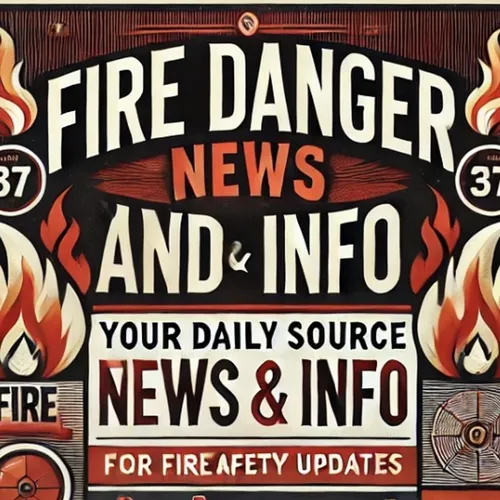Crucial Fire Danger Grips the West: Unprecedented Heat, Drought, and Thunderstorms Fuel Wildfires
- Author
- Quiet. Please
- Published
- Wed 03 Sep 2025
- Episode Link
- https://www.spreaker.com/episode/crucial-fire-danger-grips-the-west-unprecedented-heat-drought-and-thunderstorms-fuel-wildfires--67623479
Fire danger in the United States is reaching critical levels, especially in the Western states, as a combination of record heat, intense drought, and dry thunderstorms has elevated the risk for wildfires. According to ABC News, dozens of fires are actively burning across the West while regions such as Northern California and parts of Oregon are under red flag warnings due to dry thunderstorms that bring little rain but intense lightning and strong winds. These storms can easily ignite new fires and rapidly worsen ongoing ones. Areas like Washington’s Cascade Mountains have issued warnings as humidity drops to twelve percent and valley temperatures surge between ninety-seven and one hundred two degrees, potentially causing fires to spread with alarming speed.
Several cities are seeing unprecedented heat waves. Yakima and Spokane, Washington, could reach their highest recorded September temperatures on record, with projections near one hundred two degrees. Similarly, Los Angeles and Burbank in California have heat advisories with temperatures expected to push past one hundred degrees. Alongside the heat, wildfire smoke blankets much of the Northwest, and additional smoke from wildfires in Canada is moving in, according to ABC News. By Wednesday evening, heavy smoke plumes are forecast to extend as far as Omaha, Nebraska, and deepen throughout the Rocky Mountain region by Thursday, impacting air quality from Washington to Kansas, and even spreading into southern Minnesota, Iowa, and Missouri.
In Central California, the Governor’s Office of Emergency Services reported a major lightning storm on September second that ignited several large wildfires in the Sierra Nevada foothills and produced more than nine thousand lightning strikes in twenty-four hours. As Cal Fire reports, one complex of storms resulted in at least twenty-two distinct fires during that period. Research from UC Merced notes that climate change is expected to increase both the frequency of lightning storms and the likelihood of lightning-caused wildfires, primarily in the interior Northwestern United States and Northern Rocky Mountains. While the number of lightning days varies by region, warmer temperatures and persistent drought conditions across the West continue to drive an above-normal risk for severe wildfires, as shown in latest forecasts from the National Interagency Fire Center.
Restrictions and fire bans remain widespread. In places like Montezuma County, Colorado, and the Malheur National Forest in Oregon, local authorities have moved to high fire danger ratings and imposed burn bans and stage two restrictions. Meanwhile, NOAA’s new fire detection system leveraging artificial intelligence is being integrated into fire management operations, showcasing how agencies are adapting to these emerging challenges. This heightened fire danger is part of a concerning pattern of hotter, drier conditions that now extend not only across the US West but also in parts of Hawaii and the Southern Plains, increasing the urgency for vigilant fire management and public awareness.
Some great Deals https://amzn.to/49SJ3Qs
For more check out http://www.quietplease.ai
